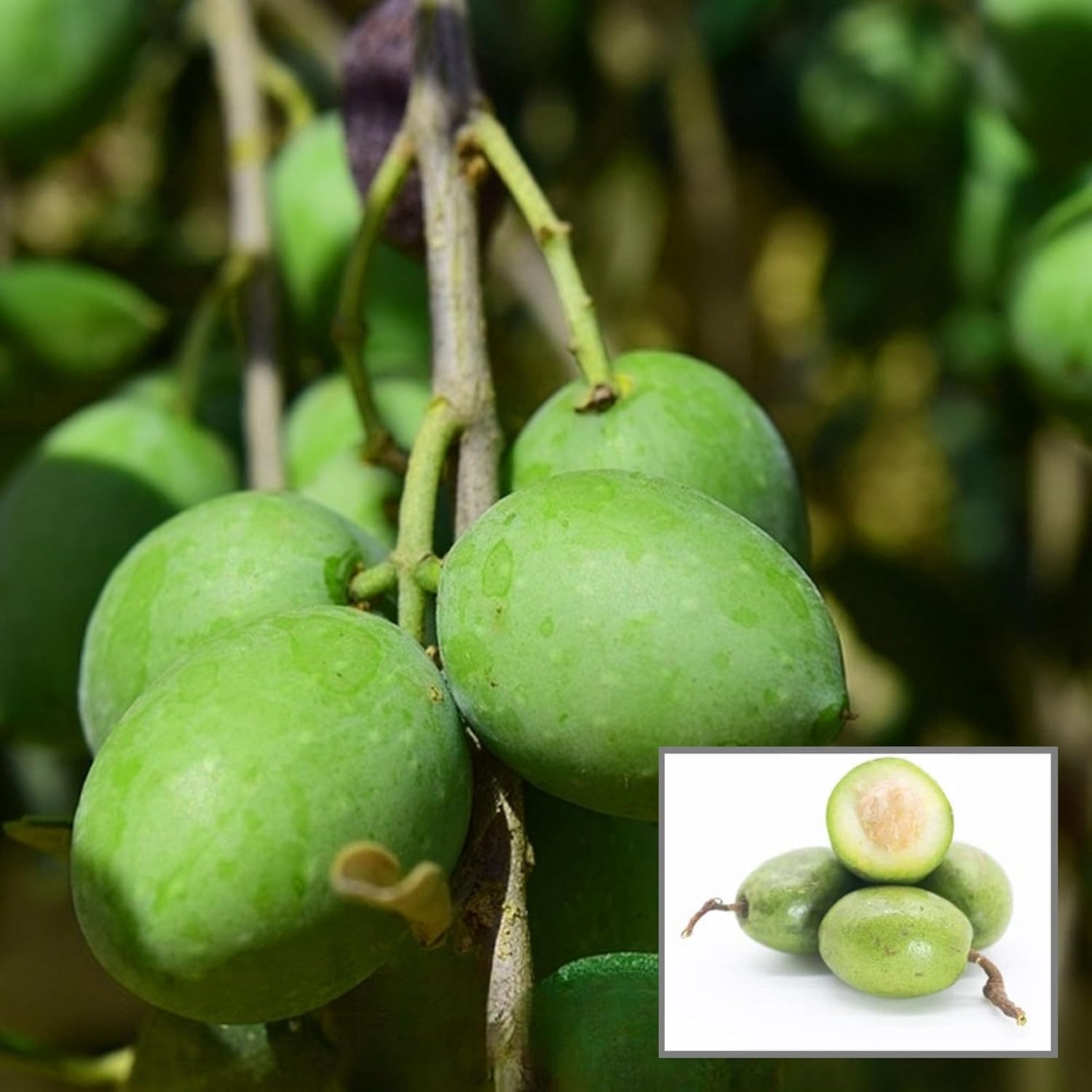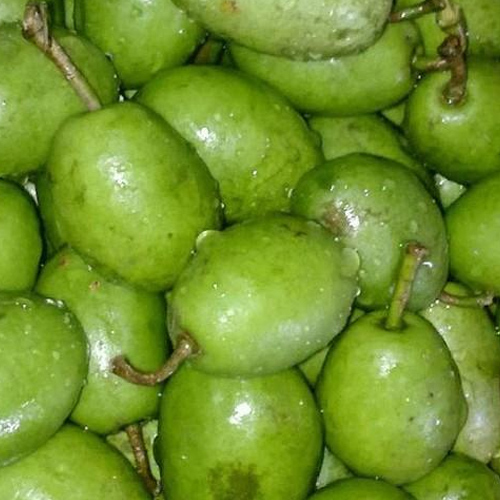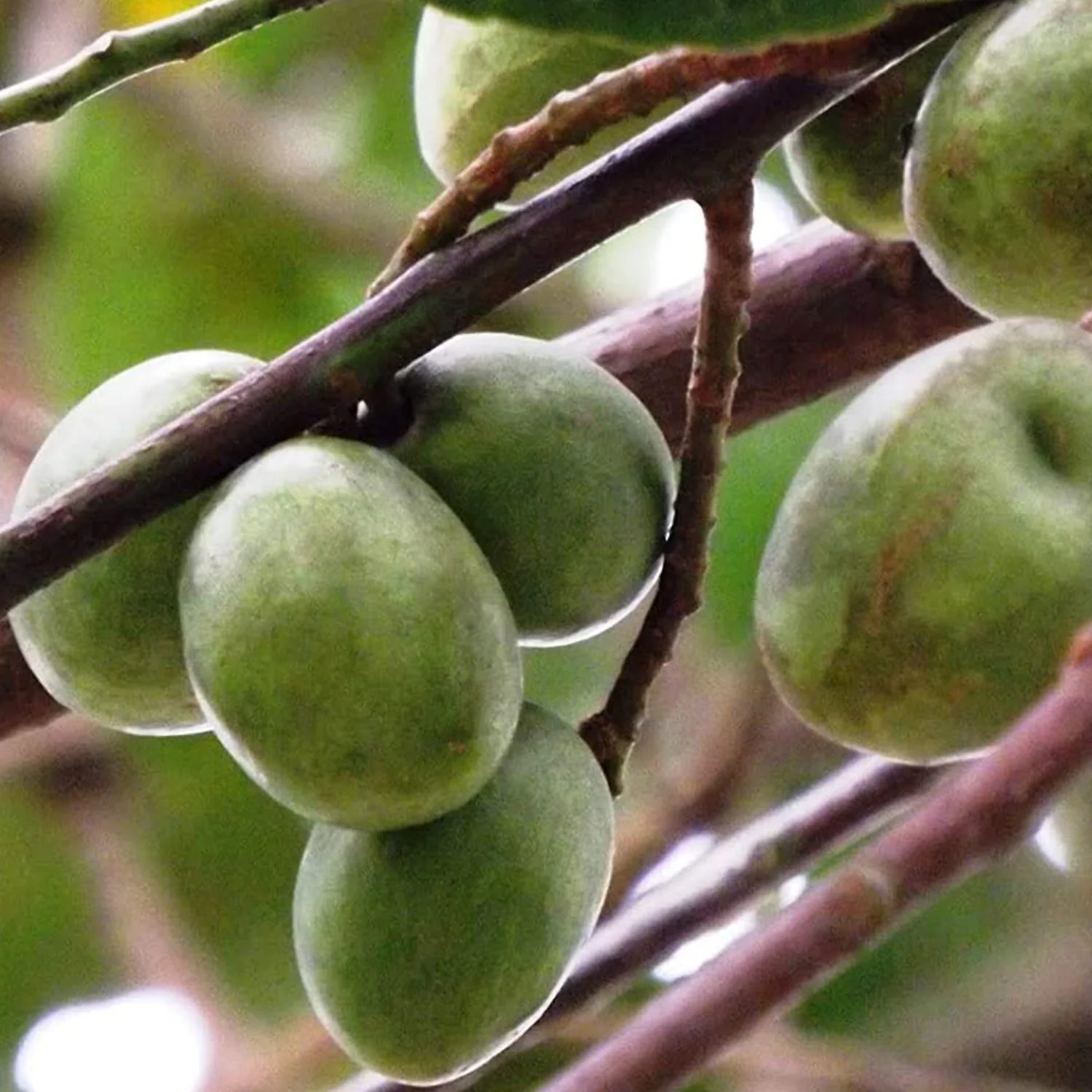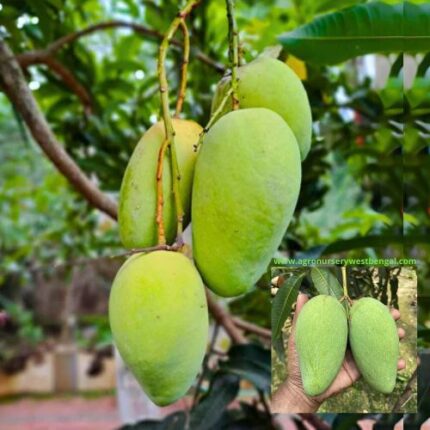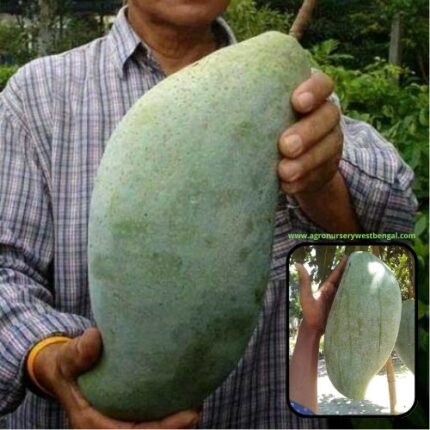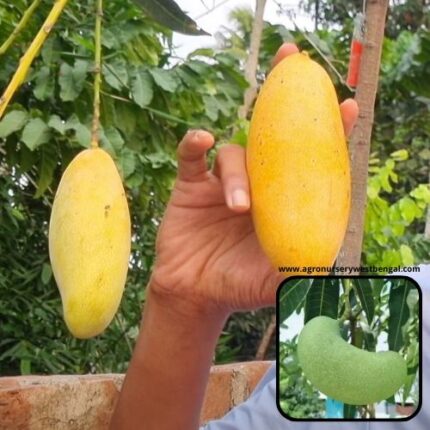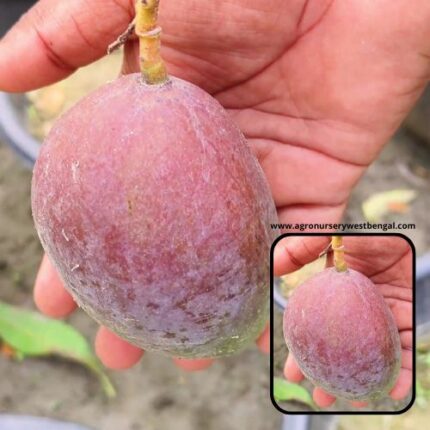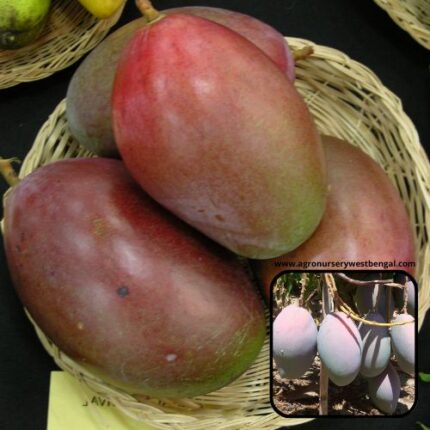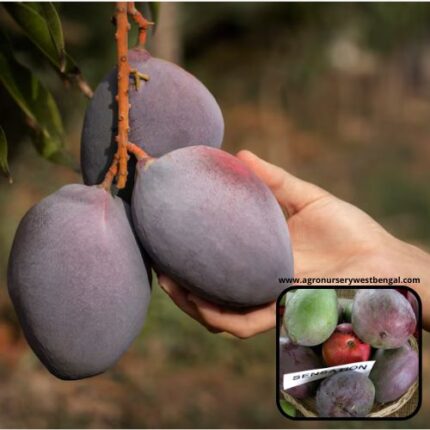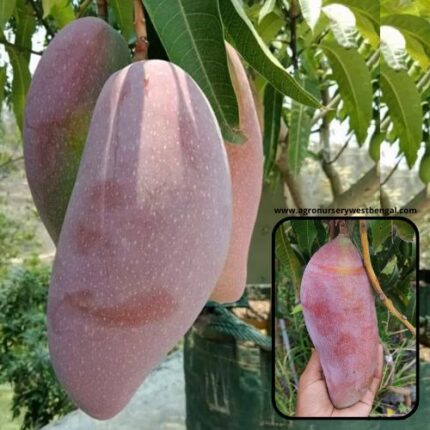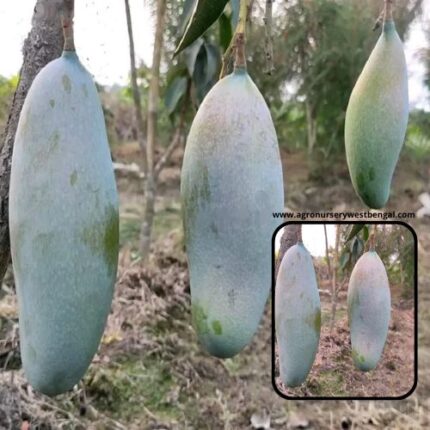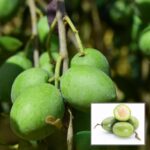
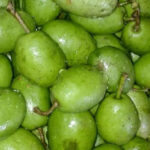
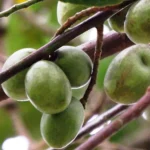
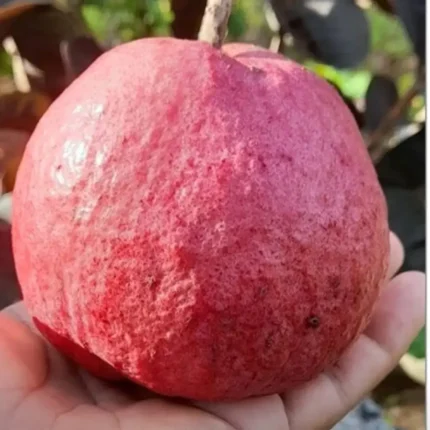
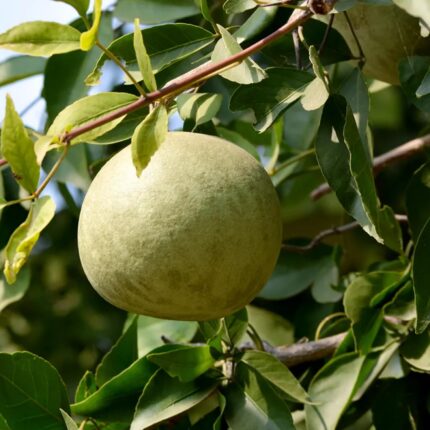
Jalpai fruit plants
₹799 Original price was: ₹799.₹399Current price is: ₹399.
alpai often called “Indian Olive” or “Ceylon Olive,” is a tropical fruit that comes from the Elaeocarpus serratus tree. It is particularly popular in West Bengal (India), Bangladesh, Assam, and Sri Lanka, where it is known by various regional names. Despite its common English names, it’s botanically distinct from the Mediterranean olive (Olea europaea).
Here’s a detailed description of the Jalpai fruit:
-
Appearance:
- Shape and Size: Jalpai fruits are small, elongated, and oval to ovoid, resembling a miniature olive or a small plum. They typically range from 2 to 5 centimeters in length and 1 to 2 centimeters in diameter. They grow in dangling clusters on the tree.
- Skin (Pericarp): The skin is semi-thin, taut, smooth, and has a matte finish. When unripe, it’s green. As it matures, it remains largely green but can develop pale red to purple hues or mottling, depending on ripeness and growing conditions.
- Internal Flesh: The flesh is pale yellow-green, firm, crisp, and solid. It’s often described as chewy. Some varieties may show purple streaks or even a dark purple ring just beneath the skin.
- Seed: Each fruit contains a single, large, hard, brown, oval seed that is tightly adhered to the flesh, making it a drupe.
-
Taste and Texture:
- Taste: Jalpai is primarily known for its mild, sour, and astringent taste. It has a unique flavor profile that can be described as herbal, with subtle notes of cilantro and vinegar. Some people experience a tingling sensation on the mouth and lips when consuming it raw, which is considered pleasant by many in its native regions. The flavor can sharpen with heat and soften with cooking.
- Texture: The flesh is crisp and crunchy, offering a satisfying bite despite its firm nature.
-
Botanical Characteristics and Origin:
- Jalpai grows on a medium to large evergreen tree, reaching heights of 15 to 60 meters. The trees have glossy, dark green leaves, and produce small, white, bell-shaped flowers in clusters.
- It’s a tropical species native to the Indian subcontinent (including Assam, Bangladesh, Sri Lanka, and parts of Southern India) and Southeast Asia.
- Jalpai is largely a wild species, foraged and planted in home gardens. It’s generally not commercially cultivated on a large scale, making it a localized and seasonal fruit.
-
Seasonality:
- Jalpai is typically harvested in the post-monsoon season in India, generally from August to November, and sometimes extending into January in certain regions.
-
Nutritional Value and Health Benefits:
- While not extensively studied, Jalpai is recognized for its nutritional and medicinal properties. It is a source of:
- Vitamin C: To boost the immune system.
- Dietary Fiber: To regulate digestion.
- Iron: Important for hemoglobin development.
- Vitamin E: An antioxidant that helps reduce inflammation.
- It contains omega-3 fatty acids, which are beneficial for cardiovascular health.
- In traditional medicine, Jalpai has been used as an antihypertensive and analgesic. It’s consumed to relieve symptoms associated with diarrhea and may help with migraines.
- While not extensively studied, Jalpai is recognized for its nutritional and medicinal properties. It is a source of:
-
Culinary Uses:
- Jalpai is a versatile fruit, primarily used for its souring properties in various culinary preparations, especially in Bengali and Assamese cuisine.
- Pickles (Achar): This is one of the most popular uses. The fruits are pickled, often whole or sliced, creating tangy and spicy preserves.
- Chutneys (Chutney/Ambal): It’s widely used to make sweet and sour chutneys, often boiled with sugar, salt, and spices.
- Curries and Souring Agent: It’s used as a souring agent in various curries and lentil dishes (like dal) to impart a unique tangy flavor.
- Raw Consumption: While very tart, some enjoy eating it raw with a sprinkle of salt, chilies, and sugar, especially in regions like Manipur.
- Relishes: Can be made into relishes to accompany meals.
Jalpai is a cherished local fruit, valued for its distinctive sour taste, crisp texture, and its role in traditional cuisine and medicine, particularly in Eastern India and neighboring countries

